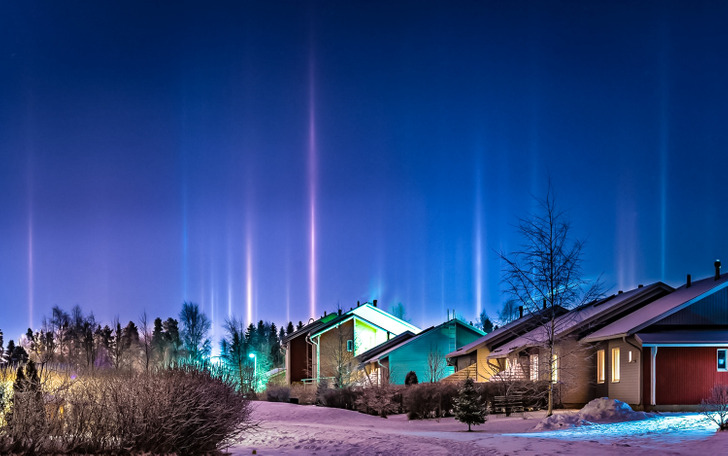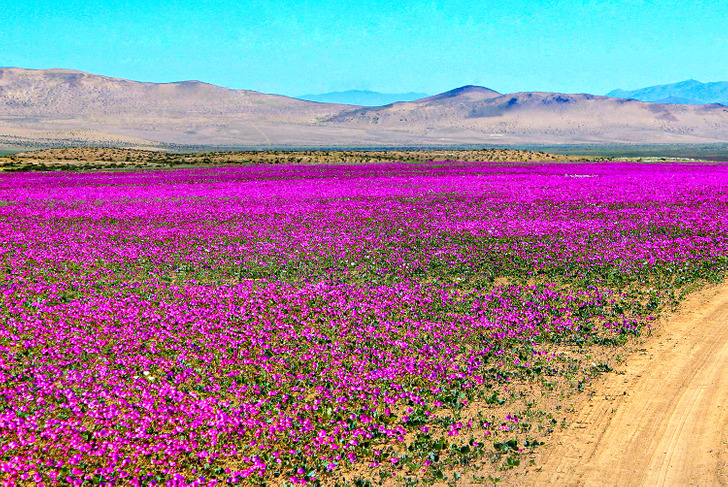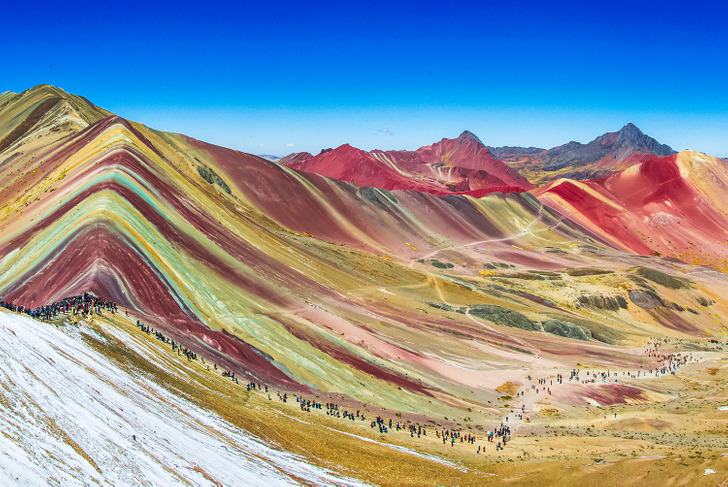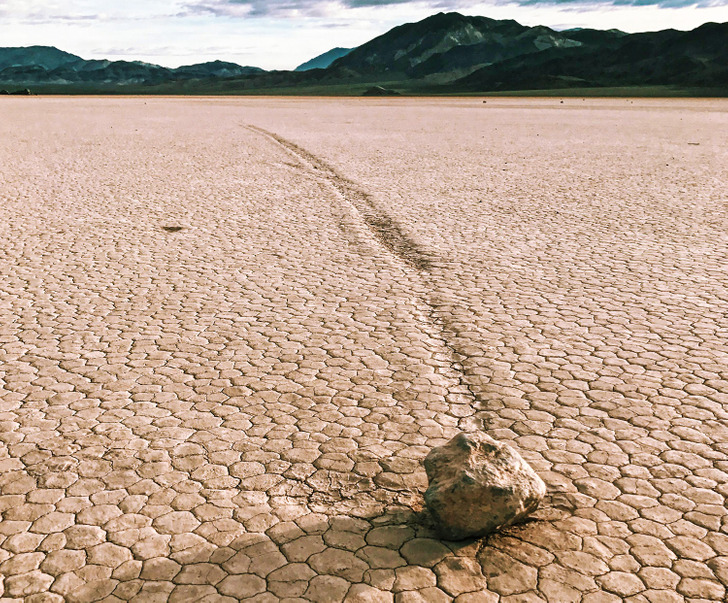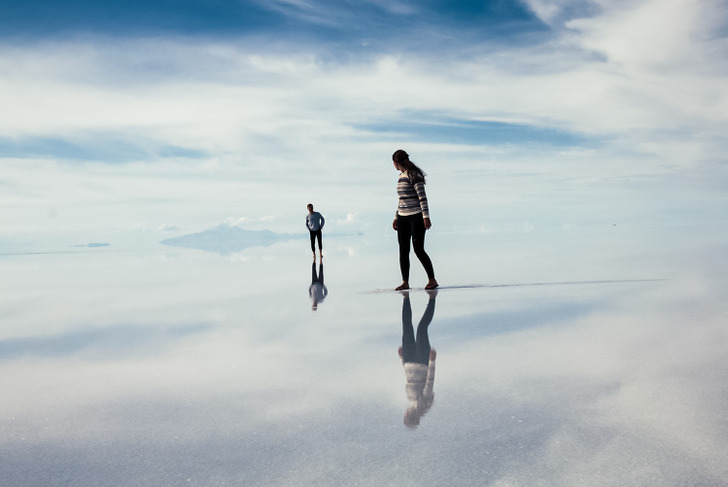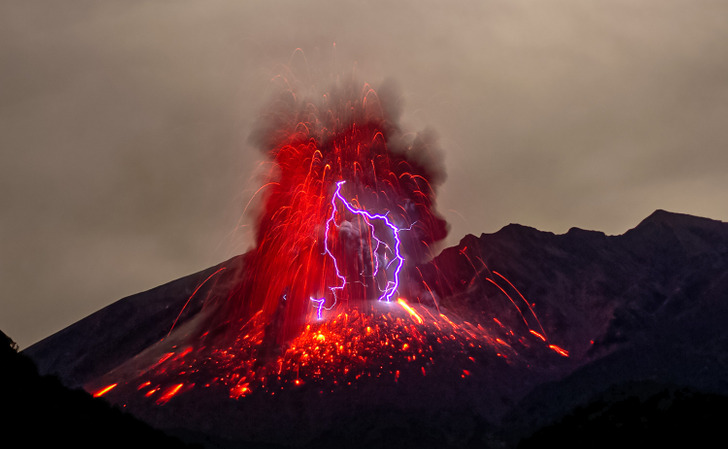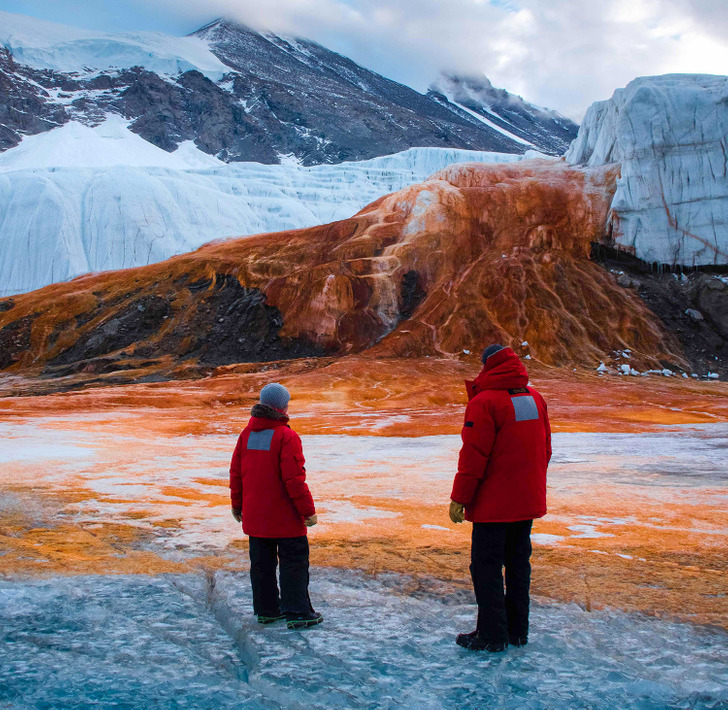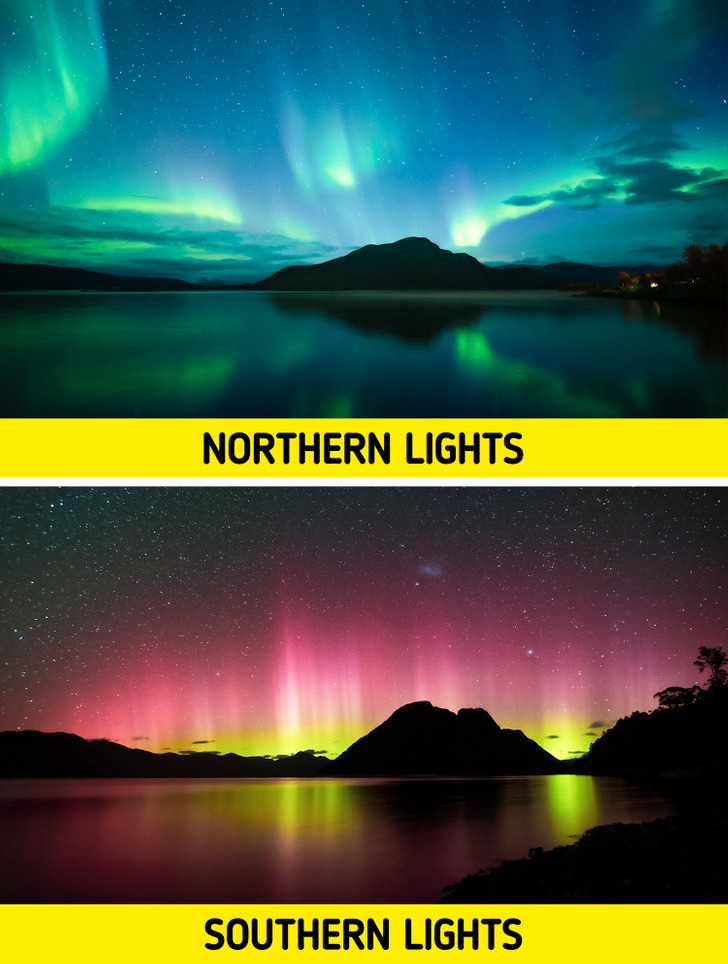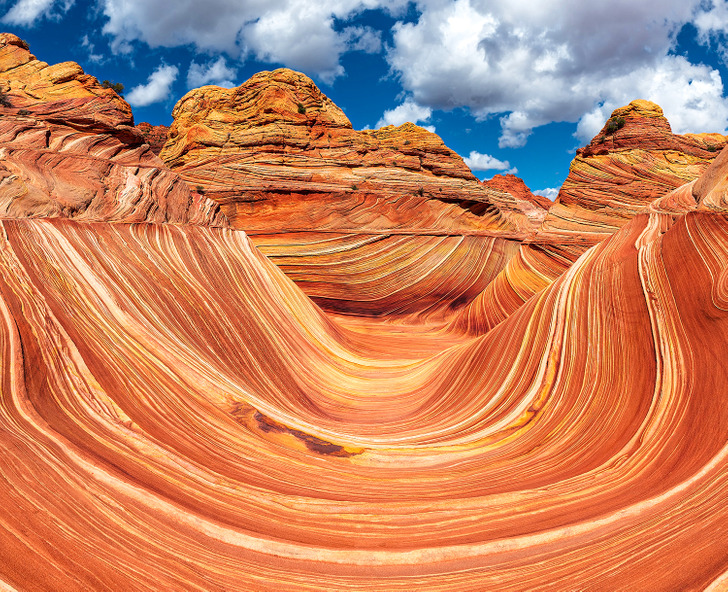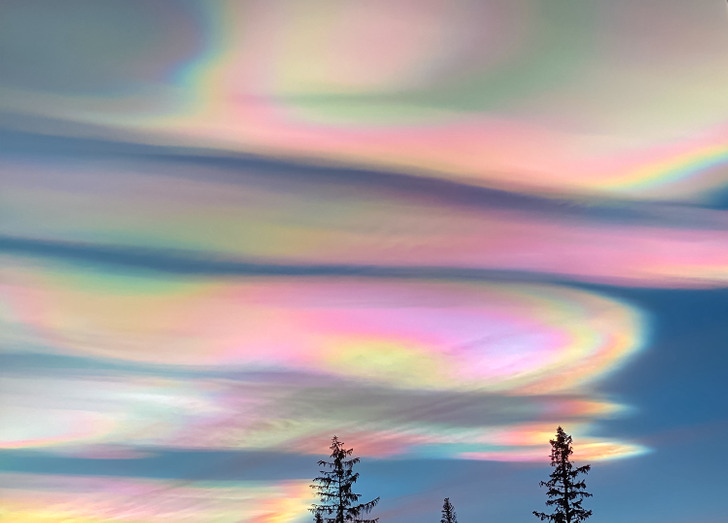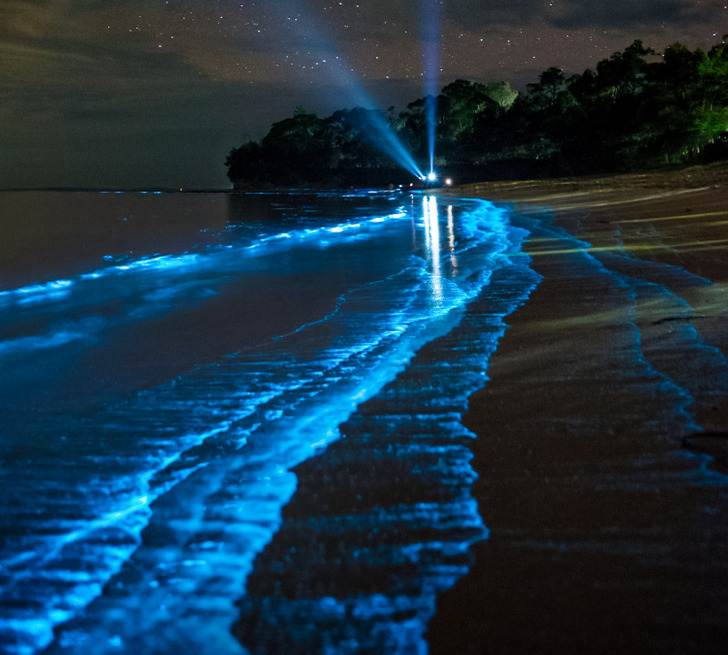11 Fascinating Natural Phenomena That Will Give You a New Level of Appreciation for Our Planet
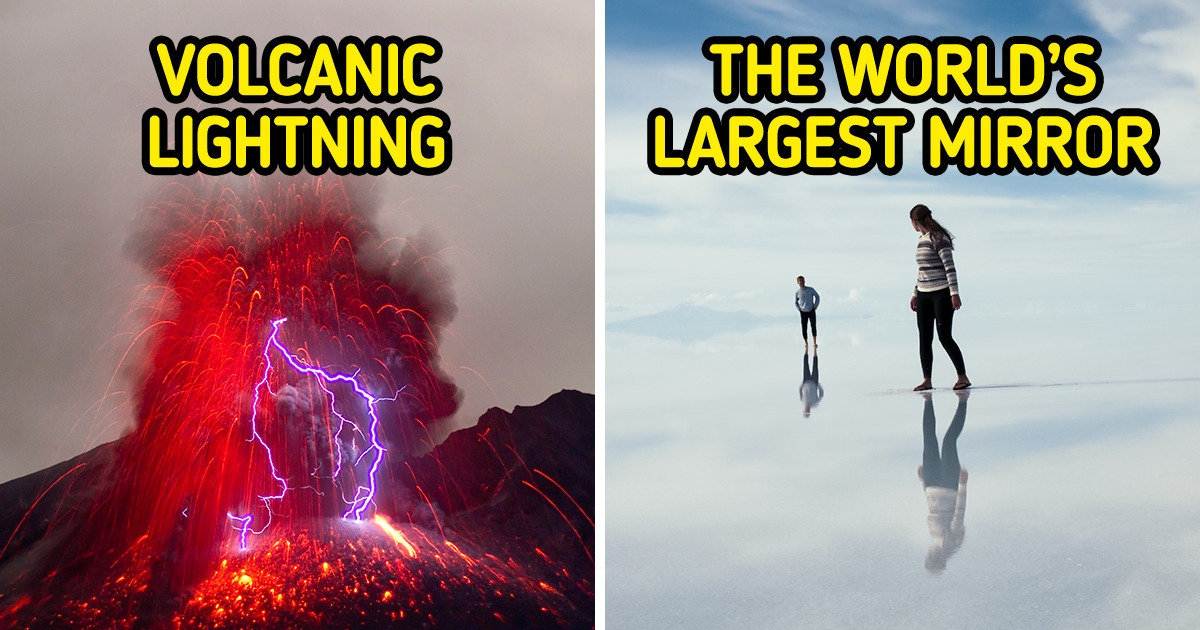
The world is full of beautiful landscapes to behold, but there are also many awe-inspiring sights that are caused by different natural phenomena. These phenomena, under the proper atmospheric and environmental conditions, take regular landscapes and turn them into scenes that belong in a painting or in a fantasy world.
From phenomena that affect glaciers in Antarctica to volcanic eruptions that have to be witnessed in person to be believed, 5-Minute Crafts has compiled a list of some of the most fascinating natural phenomena and the reasons for why they occur.
1. Light pillars
This is an atmospheric optical phenomenon that occurs when light is refracted by ice crystals present in the atmosphere. In order for this phenomenon to occur, the ice crystals must be floating near ground level and the air must be both cold and calm, which will cause light sources to be refracted as a vertical beam of light.
Light pillars are often colorful, adding to their allure. Their colorfulness is caused by the fact that each beam will have the same color as their source light, most of which are man-made.
2. Desert bloom
Deserts are typically known for being one of the most barren and inhospitable habitats on Earth due to their harsh conditions. However, in certain deserts of the world, there are periods of time where there is an increased amount of rainfall in the area, which allows the seemingly impossible phenomenon of having a field of flowers blooming in the middle of a desert to occur.
The seeds of the flowers that are able to grow in these conditions have a very hard coat that allows them to stay in a dormant state for upwards of 10 years, waiting for the next rainfall season.
3. Rainbow mountain
The Vinicunca mountain, also known as the Rainbow Mountain or the 7-Color Mountain, is located in Perú, where it has become an increasingly popular tourist destination thanks to its captivating colors. The mountain owes its particular coloration to the unique composition of mineral sediments of the area, which includes red clay, copper oxide, and limonite, among many others.
Over time, the rich variety of minerals found in the soil started piling up in an arranged fashion due to the differing weights of the minerals, resulting in the stunning landscape we are able to appreciate today.
4. Sailing stones
These stones, which seemingly slide out of their own volition, were the subject of a long-standing mystery. Most notably found in Death Valley National Park in California, these stones can be found with long trails behind them, which seemed to defy logic—considering some of the stones weigh more than 300 kilograms.
The explanation behind this phenomenon is, as usual, a combination of very specific events that allow it to happen. There is a time when dry lake bed that houses these stones gets very shallowly filled with water and usually freezes at night. This creates a thin sheet of ice that is subsequently melted and broken up into large panels on sunny days. These thin layers of ice are then moved by the wind over the dry lake bed, which pushes the stone, leaving the famous trail behind.
5. The world’s largest mirror
The Uyuni Salt Flats, located in the southwest Bolivia, is an area that used to be covered by lakes that have now dried up, leaving a thick crust of salt. The flatness of the terrain, along with the salt crust, makes it so that water cannot dry after it has rained, leaving a perpetual layer of water on the surface during the rainy season. Thus, the water reflects the clear skies, forming a natural mirror that is 130 kilometers long.
6. Dirty thunderstorm
The image of a volcano shooting lightning bolts as it is erupting is a frightening sight, but it is something that can be witnessed under the right conditions—it’s a phenomenon also known as volcanic lightning.
Much like in a regular thunderstorm, lightning occurs due to the collision and friction of materials in the atmosphere, causing the phenomenon known as charge separation, most commonly referred to as static electricity. In a volcanic setting, there is volcanic material and ash that are colliding at high speeds, building up static that ends up being released in the form of lightning bolts. This rare phenomenon is more likely to happen in volcanic eruptions where the smoke plume reaches a high altitude because it makes hot air from the eruption collide with the cold air in the atmosphere, building up even more static.
7. The red falls of Antarctica
You would not be alone in thinking that Antarctica is a continent where there is nothing but whiteness in its landscapes, but there is a glacier that defies expectations in a grim fashion. Underneath the Taylor Glacier, there’s a complex network comprised of many rivers and a lake, all of which have a very high concentration of iron. This gives the water a reddish hue when it pours out of the glacier’s fissures.
The subglacial water is also very salty, which not only means that it requires a lower temperature to become frozen but also that it releases heat when it does freeze. This melts the ice from the glacier, allowing this peculiar-looking water to continuously flow out of the glacier.
8. Aurora borealis and aurora australis
Aurora borealis, also known as the northern lights, is one of the world’s most captivating phenomena thanks to its dazzling spectacle of lights. A lesser-known phenomenon is its southern counterpart, aurora australis. This is a phenomenon that has marveled humanity and has been depicted in artistic expression for tens of thousands of years.
These 2 phenomena occur due to the charged particles that the sun is constantly emitting toward Earth. Because of our planet’s magnetic field, these particles are deflected and deposited in both the north and the south pole, where they end up radiating all sorts of entrancing colors. The colors of these lights are dictated by the molecules present in Earth’s atmosphere—red is produced by nitrogen molecules and green is produced by oxygen molecules, for example.
9. The Wave in Arizona
Mostly due to the fragility of this rock formation, but also due to how coveted of a destination it has become, visiting The Wave—located inside the Southwestern United States—involves winning an actual lottery that is held every day. Only 64 people get to witness this phenomenon in person every day.
These mesmerizing U-shaped troughs were first formed via water erosion. Despite the fact that the water from the area has dried out, the process of erosion has continued, thanks to the winds that continuously carve deeper into the stone.
10. Mother of pearl clouds
This colorful phenomenon, also known as nacreous clouds or polar stratospheric clouds, is a stunning yet ultimately harmful phenomenon where iridescent clouds fill up the sky. This unique type of cloud only forms in regions near or within the Arctic Circle. They occur at a high altitude and only when the atmosphere reaches very cold temperatures.
Unfortunately, this type of cloud formation also contributes to the destruction of the ozone layer in Antarctica. These clouds turn benign chlorine molecules into reactive ones that further destroy the ozone layer, and what’s more, they also remove nitrogen molecules, which normally play a role in mitigating the destructive effect of chlorine. This unfortunate effect of “mother of pearl” clouds makes them one of the main contributors to the growth of the ozone hole in Antarctica.
11. Bioluminescent beaches
This phenomenon makes it look as if these beaches belong to an alien planet, but in reality, it’s part of a process known as bioluminescence — a chemical reaction that produces light within a living organism. It is commonly used as a way to confuse predators and attract prey, among other things. In this case, the blue glow in the waves is produced by bioluminescent dinoflagellates, a type of plankton that can be found in the waters of the beaches where this phenomenon occurs.
This bioluminescent plankton is also known as sea sparkle. Marine species are usually able to process only blue and green colors, which explains the blue hue that this phenomenon usually has. This is a phenomenon that occurs at night, especially when the water is turbulent since bioluminescence is used by the plankton as a defense mechanism against enemies.
